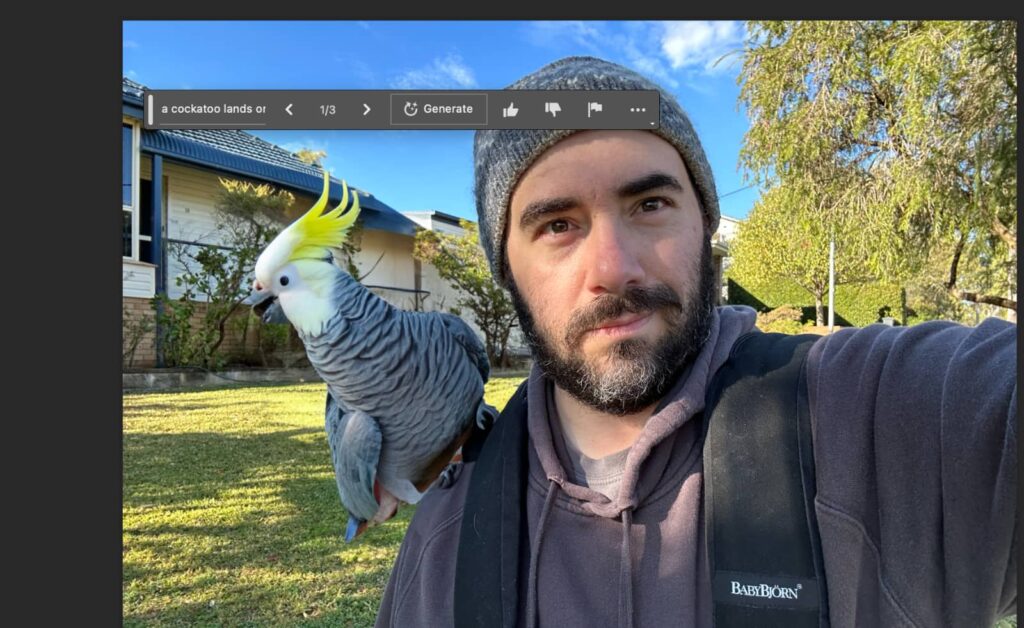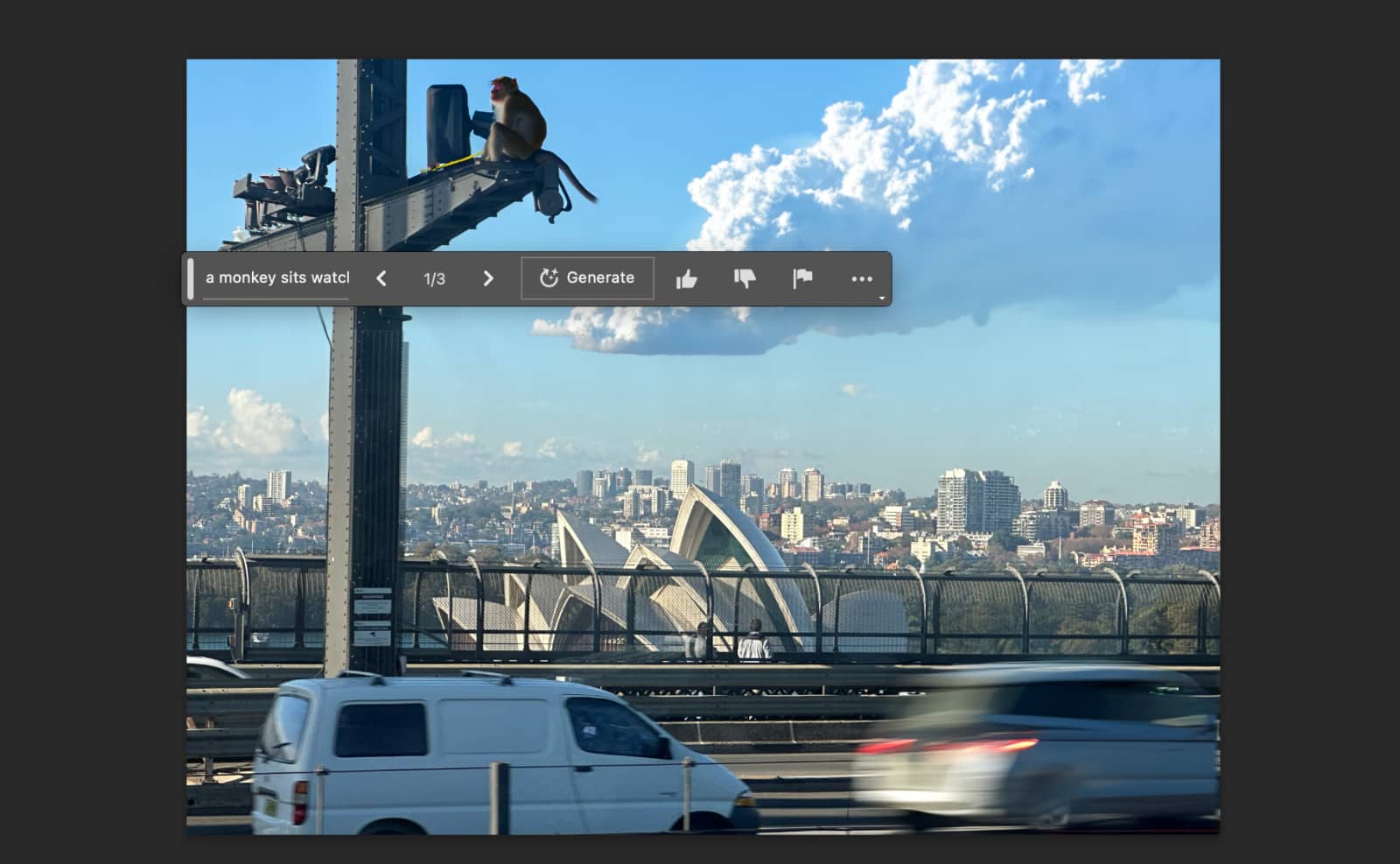Need a bit of help filling or fixing a scene? Adobe’s latest addition could just fix things in a few keystrokes.
Making photos look more complete could soon be the domain of artificial intelligence, at least based on some changes Adobe is testing for Photoshop.
Adobe has been testing its Firefly AI as a competitor to the likes of Midjourney and DALL-E this year, but now it looks poised to do something else entirely: help out when you’re editing photos.
It’s a feature in beta and one that is essentially a co-pilot for creative work, offering the chance to change or complete works with only a few commands.
Creatives keen to test it will need to install Photoshop Beta, though won’t need heaps of skills, with only a photo, the lasso tool, and maybe some imagination about what you want to do next.
You can start with any image, and then draw a lasso selection shape around anything in the photo, before hitting the “Generative Fill” button, which will shift into a text box and ask for a description to fill in the blank.
From there, you can type in really anything, but ideally, it should be something that suits the space you’re working in.
Much like how Midjourney and other AI-art systems can let you create something from nothing, so too does Adobe’s Generative Fill, which also seems to work with blur and depth of field, getting it right several times in our tests, though not always nailing it.
This is a beta, after all, but the results were pretty good considering.

In no time at all, we were able to place a donut on a chair with a fairly accurate blurry depth of field, a cockatoo landing on a shoulder, and could add several elements to a photographic scene, including clouds, cars, and even a monkey looking on from a bridge. This is very impressive stuff.
“By integrating Firefly directly into workflows as a creative co-pilot, Adobe is accelerating ideation, exploration and production for all of our customers,” said Ashley Still, Senior Vice President for Digital Media at Adobe.
“Generative Fill combines the speed and ease of generative AI with the power and precision of Photoshop, empowering customers to bring their visions to life at the speed of their imaginations,” she said.
Photoshop’s use of AI is just the beginning, with the technology extending from Firefly and its 100 million AI-based images being built so far. This essentially integrates AI beyond mere image generation, using the technology to modify and make images to be different, much like how AI-based code copilot technology can help developers as they work.

Adobe says the Firefly model is trained on its own stock library and other openly licensed content, and so doesn’t run into potential copyright issues of other AI solutions, meaning AI edits using this solution may not encroach upon other artists.
What Adobe hasn’t said is whether this technology will be built to support other applications, such as its movie-tools, Premiere and After Effects.
However, this is a beta (and a pretty successful one at that), so we can only imagine what Adobe is cooking up for final releases right now.
If you’re keen to try Photoshop’s Generative AI feature, make sure you have a subscription to Creative Cloud with Photoshop included, and download the Photoshop Beta. From there, you merely need to open an image and select a portion you want to edit. Aside for any AI-generated dragons, the sky is the limit.








